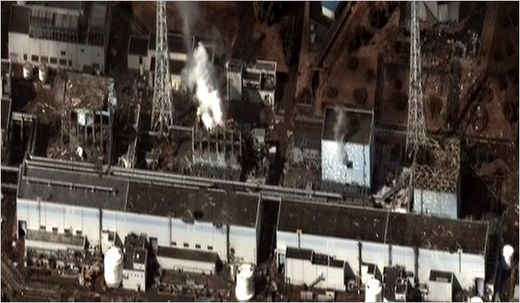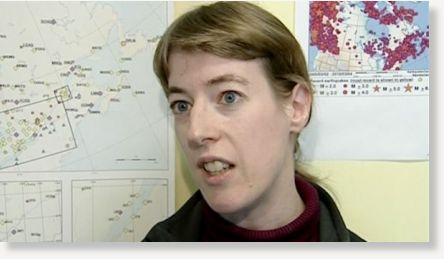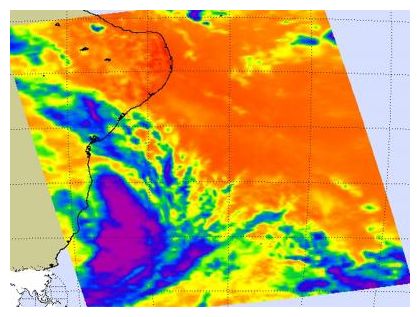Washington - The chairman of the United States Nuclear Regulatory Commission gave a significantly bleaker appraisal of the threat posed by Japan's nuclear crisis than the Japanese government, saying on Wednesday that the damage at one crippled reactor was much more serious than Japanese officials had acknowledged and advising to Americans to evacuate a wider area around the plant than the perimeter established by Japan.

© NHK
Japanese television showed what appeared to be steam rising from reactor No. 3 at the Fukushima Daiichi plant about 10 a.m. Wednesday.
The announcement marked a new and ominous chapter in the five-day long effort by Japanese engineers to bring four side-by-side reactors under control after their cooling systems were knocked out by an earthquake and tsunami last Friday. It also suggested a serious split between Washington and Tokyo, after American officials concluded that the Japanese warnings were insufficient, and that, deliberately or not, they had understated the potential threat of what is taking place inside the nuclear facility.
Gregory Jaczko, the chairman of the commission, said in Congressional testimony that the commission believed that all the water in the spent fuel pool at the No. 4 reactor of the Fukushima Daiichi Nuclear Power Station had boiled dry, leaving fuel rods stored there exposed and bleeding radiation. As a result, he said, "We believe that radiation levels are extremely high, which could possibly impact the ability to take corrective measures."
If his analysis is accurate and Japanese workers have been unable to keep the spent fuel at that inoperative reactor properly cooled - it needs to remain covered with water at all times - radiation levels could make it difficult not only to fix the problem at reactor No. 4, but to keep workers at the Daiichi complex from servicing any of the other problem reactors at the plant.
Mr. Jaczko (the name is pronounced YAZZ-koe) said radiation levels may make it impossible to continue what he called the "backup backup" cooling functions that have so far helped check the fuel melting at the other reactors. Those efforts consist of using fire hoses to dump water on overheated fuel and then letting the radioactive steam vent into the atmosphere.
Those emergency measures, implemented by a small squad of workers and firemen, are the main steps Japan is taking at Daiichi to forestall a full blown fuel meltdown that would lead to much higher releases of radioactive material.
Mr. Jaczko's testimony came as the American Embassy in Tokyo, on advice from the Nuclear Regulatory Commission, told Americans to evacuate a radius of "approximately 50 miles" from the Fukushima plant.
The advice represents a graver assessment of the risk in the immediate vicinity of Daiichi than the warnings made by the Japanese themselves, who have told everyone within 20 kilometers, about 12 miles, to evacuate, and those between 20 and 30 kilometers to take shelter.
Mr. Jaczko's testimony, the most extended comments by a senior American official on Japan's nuclear disaster, described what amounts to an agonizing choice for Japanese authorities: Send a small number of workers into an increasingly radioactive area in a last-ditch effort to cover the spent fuel, and the fuel in other reactors, - with water, or do more to protect the workers but risk letting the pools of water protecting the fuel boil away - and thus risk a broader meltdown.
The Japanese authorities have never been as specific as Mr. Jascko was in his testimony about the situation at reactor No. 4, where they have been battling fires for more than 24 hours. It is possible the authorities there disagree with Mr. Jascko's conclusion about the exposure of the spent fuel, or that they have chosen not to discuss the matter for fear of panicking people.
Experts say workers at the plant probably could not approach a fuel pool that was dry, because radiation levels would be so high. In a normally operating pool, the water provides not only cooling but also shields workers from gamma radiation. A plan to dump water into the pool, and others like it, from helicopters was suspended because the crews would be flying right into a radioactive plume.


